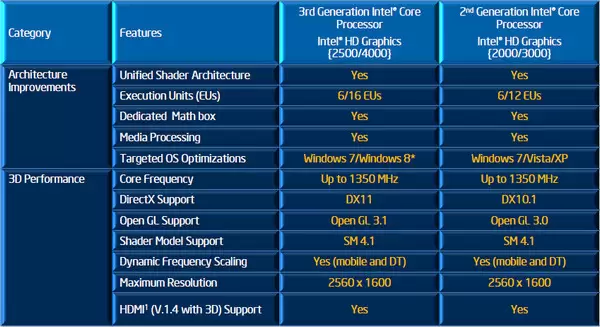

Just like the whole CPU also the graphics unit is manufactured in 32-nanometer lithography. In addition it supports DirectX 10.1, Shader Model 4.1 and HDMI 1.4 (support of 3D displays). Despite the same number than in the GMA HD, they have been improved and are now clearly faster than in the predecessor.įurthermore, the HD Graphics 3000 got a unit dedicated to decoding and encoding of HD videos. The Intel HD Graphics 3000 has 12 Execution Units (comparable to pipelines). ULV processors, e.g., the i7-2617M have an even lower clock rate of 350 to 900MHz, so, the performance should drop accordingly. E.g., the clock rates range from 650 MHz to a maximum of 1300 MHz in the new i5/i7-2X20 or i5/i7-2X40 M/QM/XM processors, while the i3-2310M and also the i7-2630QM use a clock rate between 6 MHz and the i5-2410M and the i7-2635QM between 650-1200 and are therewith lower clocked. However, some processors of the Sandy-Bridge family handle this feature differently. Further memory requirements are covered by accessing the RAM of the computer.Īlike the actual cores of the CPU, the integrated HD Graphics 3000 can dynamically adjust its clock rate upon increased load ( Turbo Boost). Alike its predecessor it does not have a dedicated graphics memory, but, can access the Level-3 cache of the CPU (which is now called ' Last Level Cache' - LLC) of up to 8 MB, depending on the CPU. In addition, a desktop reference system with Core i5-2500K and also HD Graphics 3000 was available for further tests.Ĭontrary to the GMA HD, Intel HD Graphics 3000 is directly integrated in the processor core of the Sandy-Bridge processors. This article covers the performance of the HD Graphics 3000 inside the Intel Core i7-2720QM CPU. In our test we used a laptop with Optimus solution, the Asus N53SV.

and the Intel HD graphics 3000 GPU can be used together with an Nvidia graphics card by means of the Nvidia-Optimus technology (later this year perhaps also with a similar AMD solution).the laptop can solely use a discrete graphics card from AMD or Nvidia while the Intel HD 3000 in the CPU is deactivated,.an additional dedicated GPU can be completely left out,.At the time of writing there are three options: Whether the integrated graphics is actually used, depends on the manufacturer of a specific laptop. Accordingly, all Sandy Bridge CPUs have it built-in. The Intel HD Graphics 3000 goes a step further and is now directly on the die. Replacing the GMA 4500M HD with the GMA HD, which is integrated in the CPU, Intel could already clearly improve the performance. However, also the requirements of games increased continuously.

(de)coding of videos, and could therewith disburden the CPU. At the same time there was also a trend to laptops with dedicated graphics card, which, besides 3D-calculations, also took over more and more other tasks, e.g. They proved to be sufficient for displaying the desktop in 2D, watching HD films and even simple games. the Graphics Media Accelerator (GMA) HD in the Arrandale chips or the GMA GMA 4500M HD chipset graphics of the previous Penryn systems, were designed for typical office tasks. Display ConnectorsĪPIs supported by HD Graphics 3000, sometimes including their particular versions.So far, laptops using Intel's integrated graphics solutions, i.e. As a rule, this section is relevant only for desktop reference video cards, since for notebook ones the availability of certain video outputs depends on the laptop model. Types and number of video connectors present on HD Graphics 3000. Note that GPUs integrated into processors don't have dedicated memory and use a shared part of system RAM. Parameters of memory installed on HD Graphics 3000: its type, size, bus, clock and resulting bandwidth. For notebook video cards it's notebook size, connection slot and bus, if the video card is inserted into a slot instead of being soldered to the notebook motherboard. Useful when choosing a future computer configuration or upgrading an existing one. Information on HD Graphics 3000's compatibility with other computer components. Pipelines / CUDA coresĬompatibility, dimensions and requirements These parameters indirectly speak of HD Graphics 3000's performance, but for precise assessment you have to consider its benchmark and gaming test results. HD Graphics 3000's general performance parameters such as number of shaders, GPU base clock, manufacturing process, texturing and calculation speed.


 0 kommentar(er)
0 kommentar(er)
